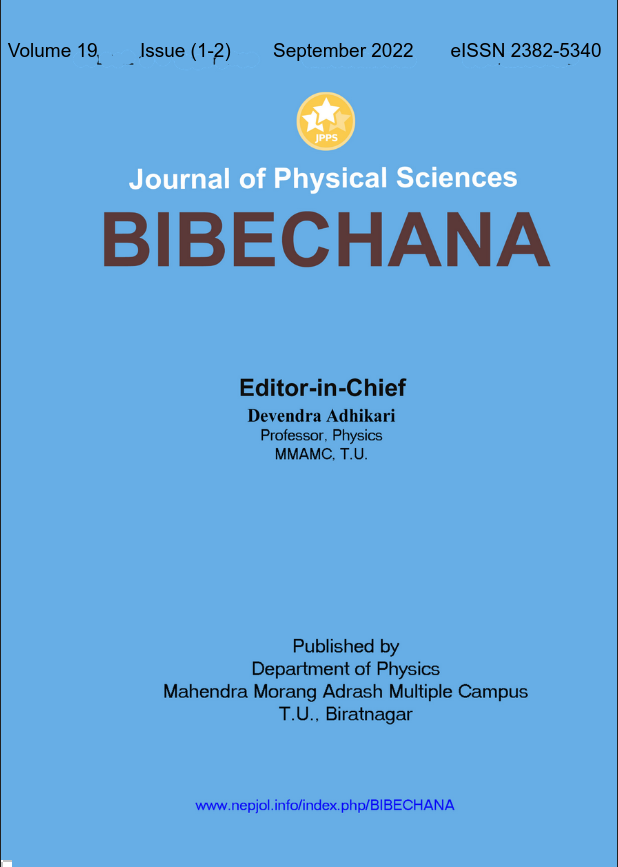Synthesis of ZnO Nanoparticles by Chemical Method and its Structural and Optical Characterization
DOI:
https://doi.org/10.3126/bibechana.v19i1-2.46396Keywords:
Zinc Oxide, Nanoparticles, Williamson–Hall method, XRD, UV-Visible spectrophotometerAbstract
In this report, ZnO nanoparticles (NPs) was synthesized by chemical method using Zinc Acetate dehydrate [Zn(CH3COO)2.2H2O)] as precursors and Ethanol and distilled water as solvent. Sodium hydroxide (NaOH) was used to maintain the pH and helps to establish the NPs. The NPs are characterized by XRD, UV-visible spectroscopy and SEM image analysis. The XRD characterization gives the polycrystalline nature of ZnO NPs with the size ~23 nm and ~27 nm calculated by Scherrer’s method and Williamson–Hall method respectively. The crystalline size of these NPs calculated using XRD pattern is validated by SEM image analysis. Using the UV-Visible spectrophotometer and Tauc plot method, the optical band gap of ZnO is found to be 3.35 eV. The uniform size distribution of NPs shown in SEM image and strong UV absorption shown in UV-Visible spectra indicate that thus prepared NPs are highly desirable for photo-catalytic activity and detection applications.
BIBECHANA 19 (2022) 90-96
Downloads
Downloads
Published
How to Cite
Issue
Section
License
Copyright (c) 2022 Rishi Ram Ghimire, Ashutosh Parajuli, Suresh Kumar Gupta, Krishna Bahadur Rai

This work is licensed under a Creative Commons Attribution-NonCommercial 4.0 International License.
This license enables reusers to distribute, remix, adapt, and build upon the material in any medium or format for noncommercial purposes only, and only so long as attribution is given to the creator.




